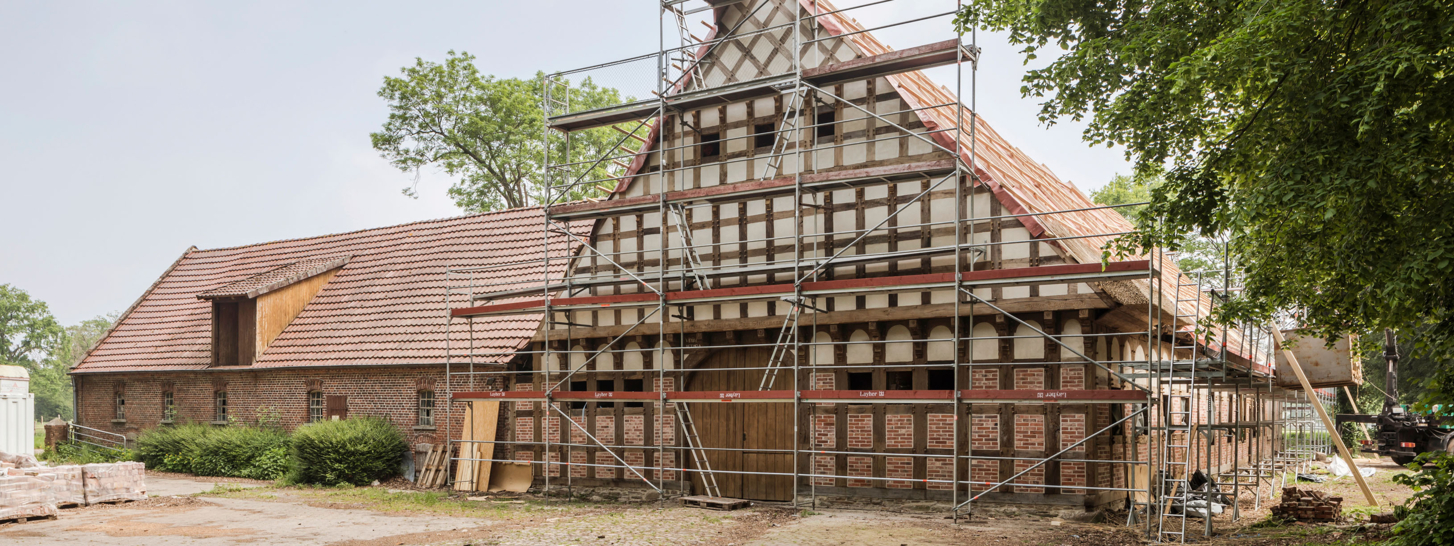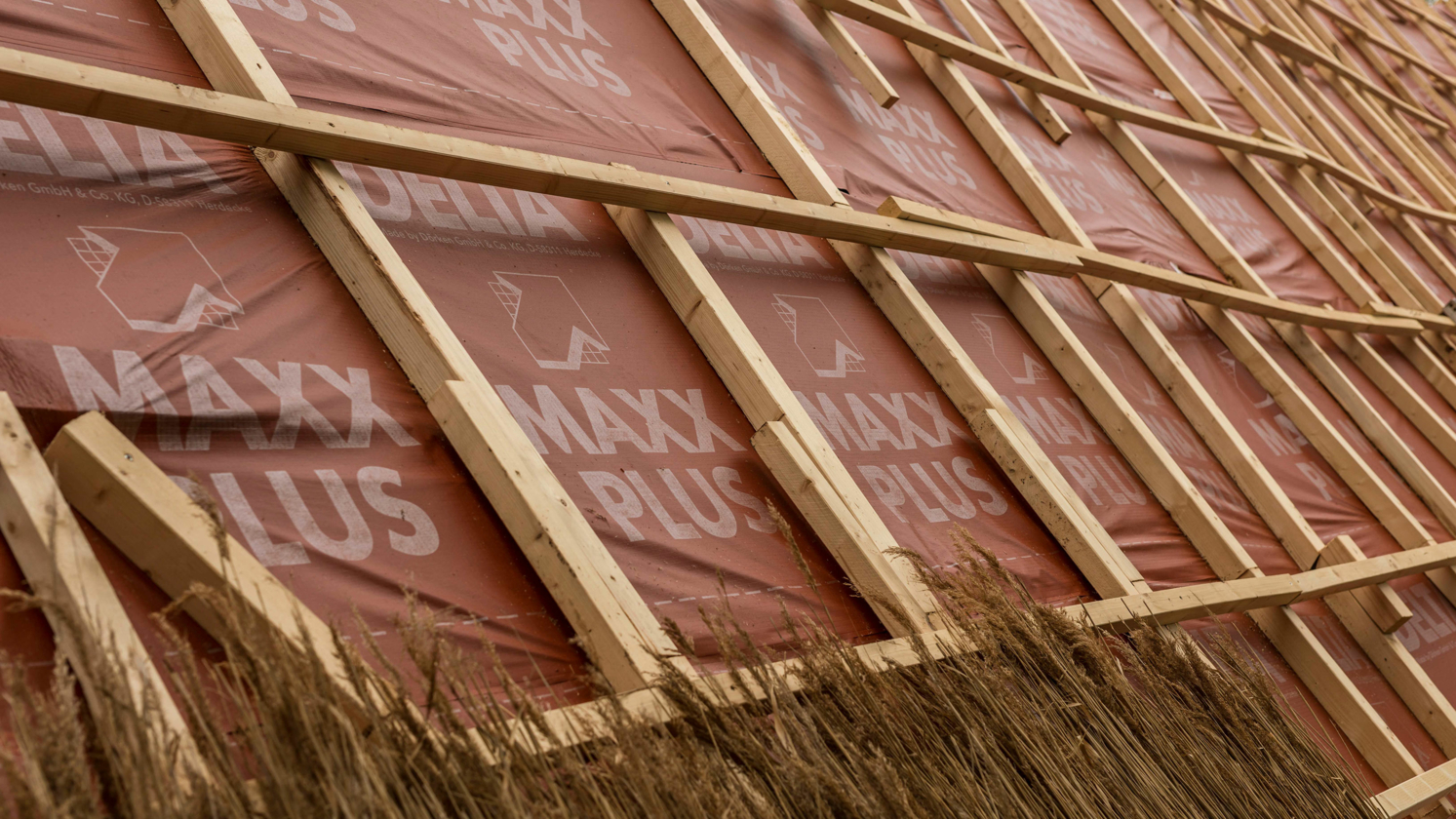It only took three days to cover the pitched roof with DELTA®-MAXX PLUS and - due to the distinctive red of the underlay membrane - it became a shining eye-catcher until it was finally covered with thatch. The work on the roof will be continued until autumn since the thatched roofers will be busy laying the thatch on the roof area of 800 sqm by binding the natural product to the roof structure, layer by layer from the eaves to the ridge by means of traditional tools and special wires, while the shining red colour of the DELTA®-MAXX PLUS slowly disappears under the thatched roof.
The complexity of the renovation of the interior will just be as that of the exterior. It is foreseeable that the old Meierhof will become a “jewel” in the centre of the community with its golden thatched roof and renovated façade. The same can be said about the fact that this building in the centre of the village will enhance the appearance of the community.
 Belgium nederlands
Belgium nederlands Belgium français
Belgium français Canada english
Canada english Canada français
Canada français China chinese
China chinese Czech Republic čeština
Czech Republic čeština Deutschland deutsch
Deutschland deutsch France français
France français Hungary magyar
Hungary magyar International english
International english Italy italiano
Italy italiano Netherlands nederlands
Netherlands nederlands Poland polski
Poland polski Russia русский
Russia русский Slovakia slovenčina
Slovakia slovenčina Switzerland français
Switzerland français Switzerland deutsch
Switzerland deutsch Turkey Türkçe
Turkey Türkçe USA english
USA english

